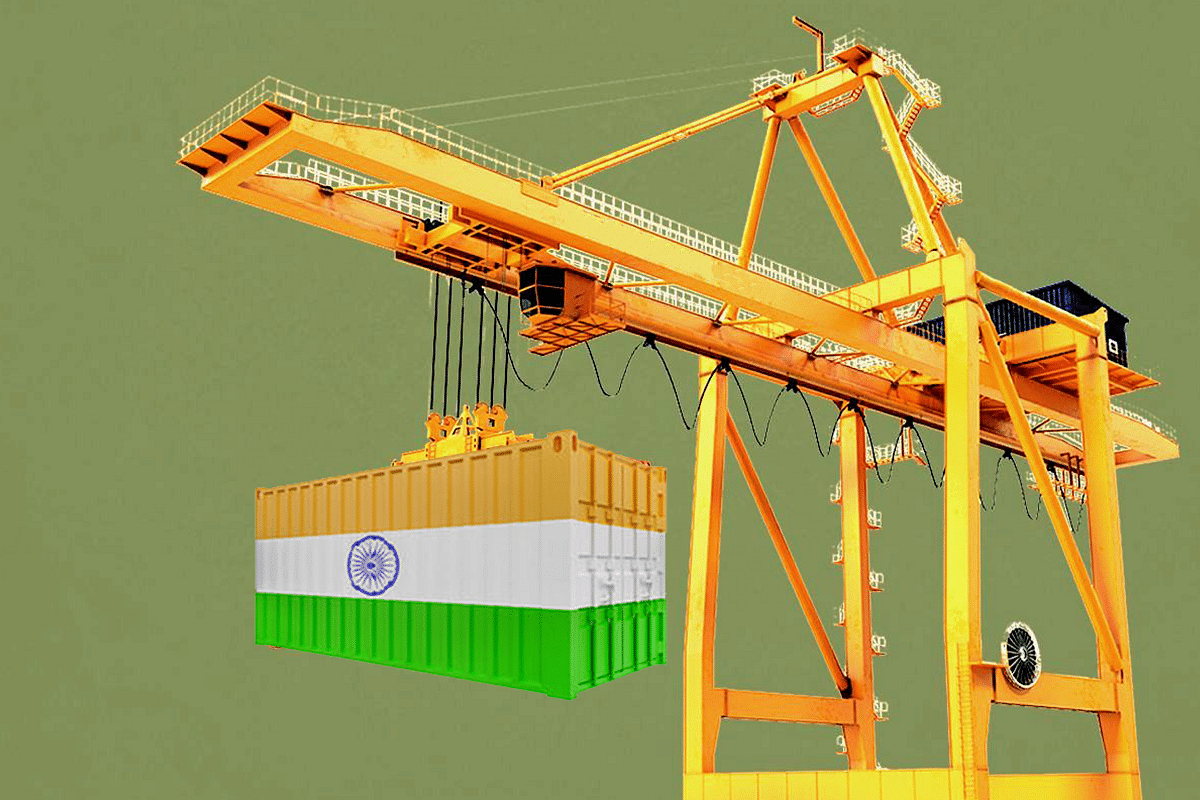Economy
India's Merchandise Exports Grow 23.52 Per Cent In June Amid Widening Current Account Deficit Worries
- Amidst the rising exports, the bigger worry for India’s economic fundamentals is the spiralling current account deficit.

India's merchandise exports grow to $40.13 billion.
Countering ongoing geo-political and rising global uncertainties, India’s merchandise exports in June 2022 grew 23.52 per cent to $40.13 billion from $32.49 billion in June 2021. This was led by record outbound shipments of petroleum products, electronic goods, textiles, cereals, leather products, rice, minerals, oil seeds, coffee, and gems and jewellery.
On a worrisome note, merchandise imports in June 2022 also surged by 57.55 per cent to $66.31 billion from $42.09 billion in June 2021, driving up the merchandise trade deficit by an alarming 172.72 per cent to $26.18 billion as against $9.60 billion in June 2021.
India’s imports growth of over 57 per cent remains a concern among analysts and exporters. President of Federation of Indian Export Organisations (FIEO) A Sakthivel sees this growth coming on account of petroleum products; coal, coke and briquettes, gold, electronic goods; organic and inorganic chemicals and artificial resins, plastic materials etc. On the flip side, rising imports of gold may lead to impressive gems and jewellery exports in the coming months, says Sakthivel.
On a quarterly basis merchandise exports for the period April-June 2022 were $118.96 billion, which is 24.51 per cent more than the $95.54 billion of India’s exports during the same quarter of 2021.
Merchandise imports for the period April-June 2022 were $189.76 billion, which is 49.47 per cent more than $126.96 billion of exports during the corresponding quarter of 2021. The merchandise trade deficit for April-June 2022 was estimated at $70.80 billion, a sharp increase of 125.34 per cent over the $31.42 billion deficit in April-June 2021.
The overall exports of merchandise and services grew to an estimated $64.91 billion in June 2022, registering a 22.95 per cent year-on-year (YoY) expansion over the same period last year. The overall imports in June 2022 shot up by 55.72 per cent over the same period last year.
For the 1st quarter of financial year 2023 (FY23), overall exports are estimated to be $189.93 billion, exhibiting a positive YoY growth of 25.16 per cent. In the 1st quarter of the FY22-23, the overall imports are estimated to be $235.11 billion, exhibiting a positive growth of 49.41 per cent over the same period last year.
In June 2022, non-petroleum, non-gems and jewellery exports which comprise a category of gold, silver and precious metals were $27.94 billion, rising 8.65 per cent over the same exports of $25.71 billion in June 2021. In June, India imported gold, silver and precious metals worth $38.53 billion, a growth of 38.30 per cent over the same category of imports of $27.86 billion in June 2021.
During the April-June quarter of FY23, the exports of gold, silver and precious metals were $83.62 billion, an increase of 13.81 per cent over exports of the same worth $73.47 billion in the same quarter period of FY22.
Imports of non-petroleum, non-gems and jewellery were $108.97 billion in April-June 2022, recording a positive growth of 34.80 per cent over the same imports of $80.83 billion in April-June 2021.
Amidst the rising exports and deficits, the bigger worry for India’s economic fundamentals is the current account deficit (CAD). According to Aditi Nayar, chief economist ICRA, while the upwardly revised merchandise trade deficit for June 2022 poses some upside risks to CAD for Q1 FY2023, the correction in commodity prices has softened the outlook for the ongoing quarter.
However, export growth may undergo a slowdown amidst a weaker outlook for the global economy. Going ahead, Nayar sees modest downsides to ICRA’s FY2023 CAD forecast of $105 billion.
Nomura analyst Sonal Varma expects a widening of the CAD to an elevated 3.3 per cent of gross domestic product (GDP) in FY23 from 1.2 per cent in FY22. The merchandise trade deficit widened to a record high in June, driven by, what Varma calls, lacklustre exports and soaring imports. On a seasonally adjusted basis, the trade deficit widened to $29.9 billion from $25.8 billion in May.
There are three reasons why Nomura predicts the CAD is likely to widen further.
First, the latest measures by the government — windfall taxes on crude oil production, export restrictions on petroleum products and an increase in gold import duties — are unlikely to improve the current account. Gold import demand is less sensitive to higher taxes, while the export taxes could moderate oil exports.
Second, the delayed reopening in India means that domestic demand will likely remain robust for the foreseeable future. Import demand for some products, like crude oil, vegetable oil, gold, coal and chemicals are relatively price inelastic and should continue to add to the import bill.
Third, the export downturn may have already started and will accelerate in H2 2022 factoring in a recession in the US, euro area, the UK, Japan, South Korea, Australia and Canada. The sharp deterioration in global growth prospects is likely to further erode export growth over coming months.
Weighing in the benefits of the newly signed free trade agreements (FTAs) and the production linked incentive (PLI) scheme which will further help in building export strength, the FIEO president draws attention to the urgency of further pushing value-added exports, augmenting container manufacturing and developing an Indian shipping line of global repute.
Introducing ElectionsHQ + 50 Ground Reports Project
The 2024 elections might seem easy to guess, but there are some important questions that shouldn't be missed.
Do freebies still sway voters? Do people prioritise infrastructure when voting? How will Punjab vote?
The answers to these questions provide great insights into where we, as a country, are headed in the years to come.
Swarajya is starting a project with an aim to do 50 solid ground stories and a smart commentary service on WhatsApp, a one-of-a-kind. We'd love your support during this election season.
Click below to contribute.
Latest